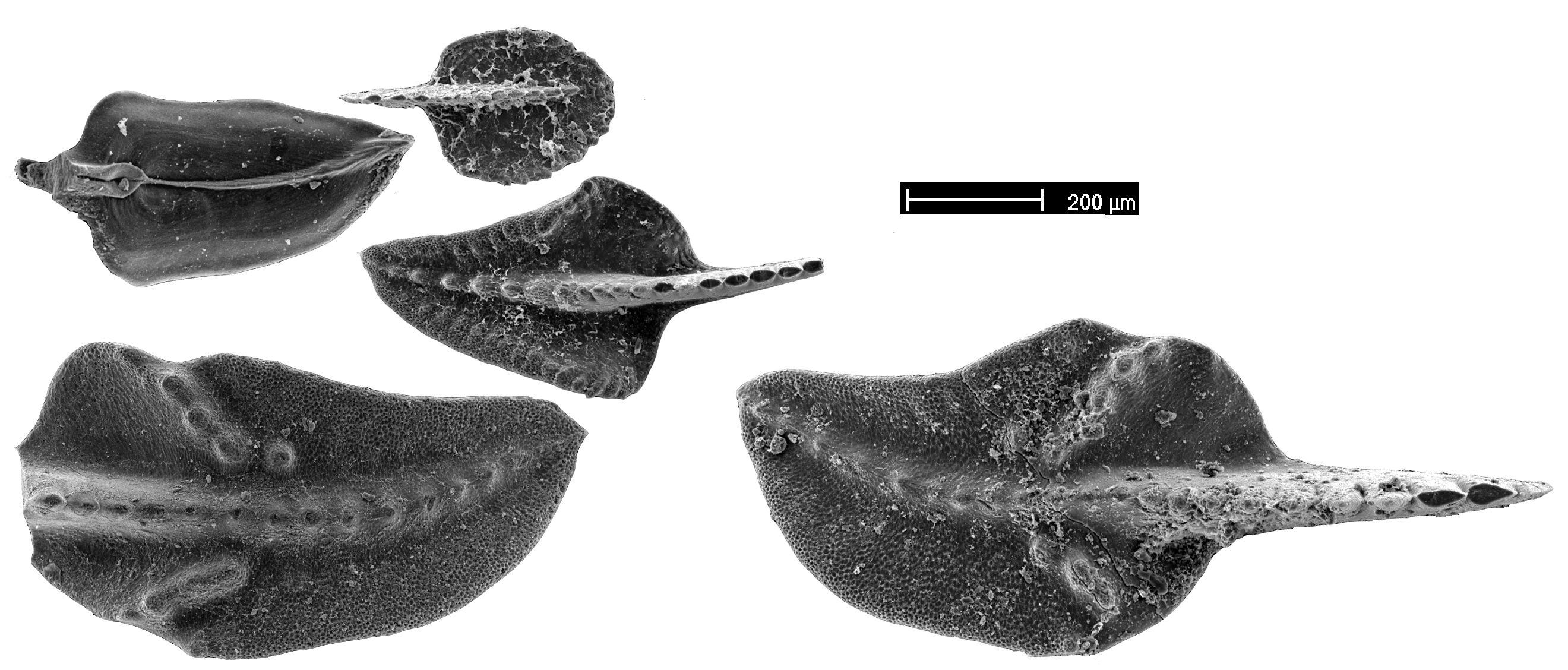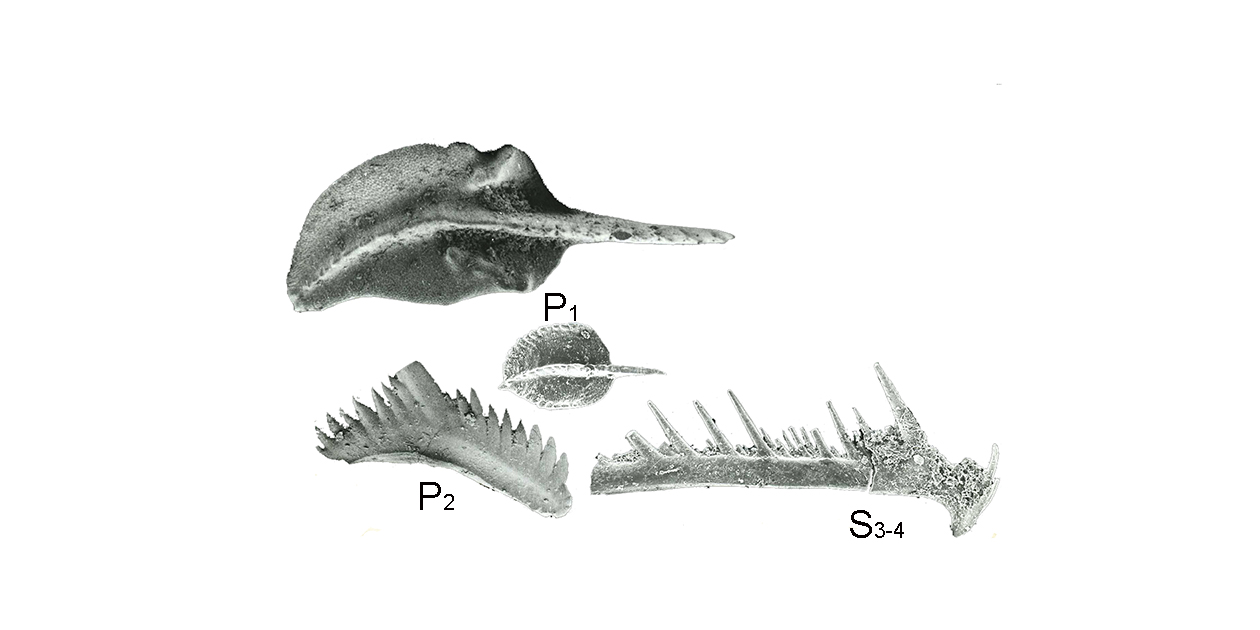Diagnoza
Platform of P1 elements with prominent oblique crests in the ventral part, which makes them easily identifiable in Toumaisian samples. At the earliest recognisable stages the platform is already fully developed as very thin asymmetrical lobes, strongly bent and with crenulated margins. Ridges develop much later. P2 elements are rather robust, with numerous sharp denticles on both processes. The whole element has a distinctly triangular shape, like that of N. purus, being generally larger, more elongated and bearing more numerous denticles. Porównanie
Populations of this species show a rather stable morphology, similar to co-occurring P. communis, but unlike early populations of the latter. Rare juvenile specimens co-occur of the kind identified with the Tournaisian Polygnathus margininvolutus Gedik, 1969. In the triangular shape of the strongly concave thin platform these elements are similar to juveniles of P. semicostatus. Similar forms occur in the Tournaisian, where they probably represent juveniles of Neopolygnathus vogesi. Autekologia Występowanie geograficzne
Ostrówka and probably Kowala in the Holy Cross Mountains and at Dzikowiec in the Sudetes. Zasięg czasowy
P. jugosus to D. trigonica Zones of the Fammenian; the early Tournaisian. Materiały muzealne
ZPAL: 595 specimens. Literatura
Dzik, J. 2006. The Famennian "Golden Age" of conodonts and ammonoids in the Polish part of the Variscan sea. Palaeontologia Polonica 63, 1-359. Dzik, J. 1997. Emergence and succession of Carboniferous conodont and ammonoid communities in the Polish part of the Variscan sea. Acta Palaeontologica Polonica 42, 57-170. | 





